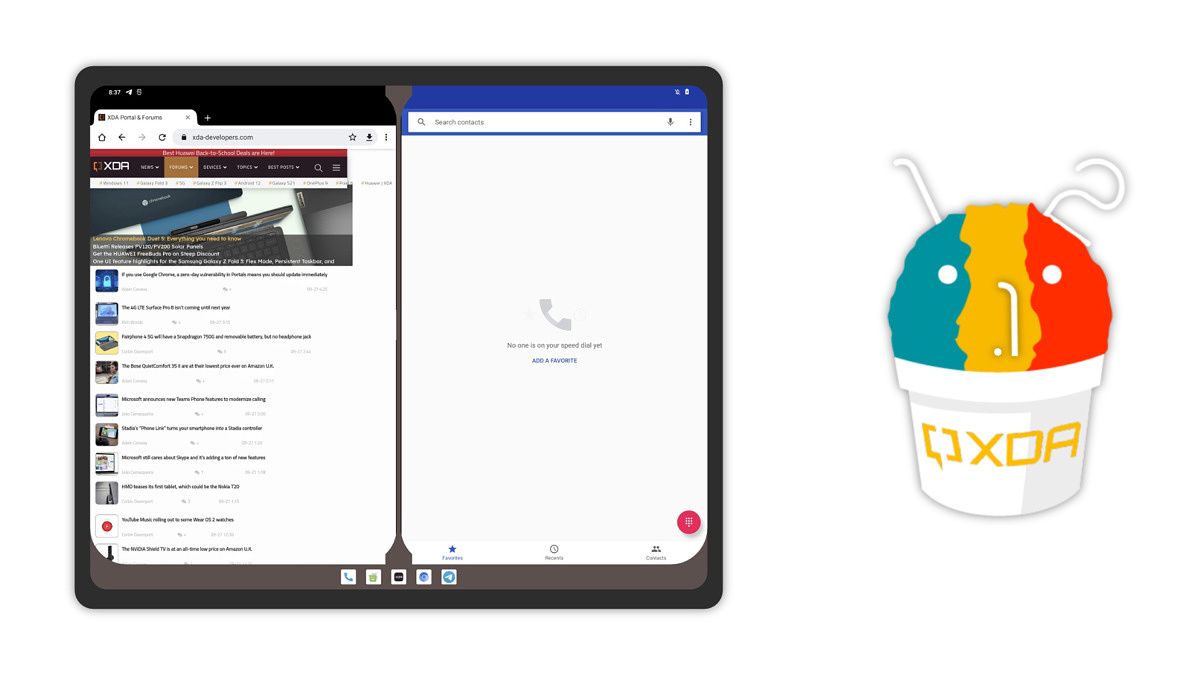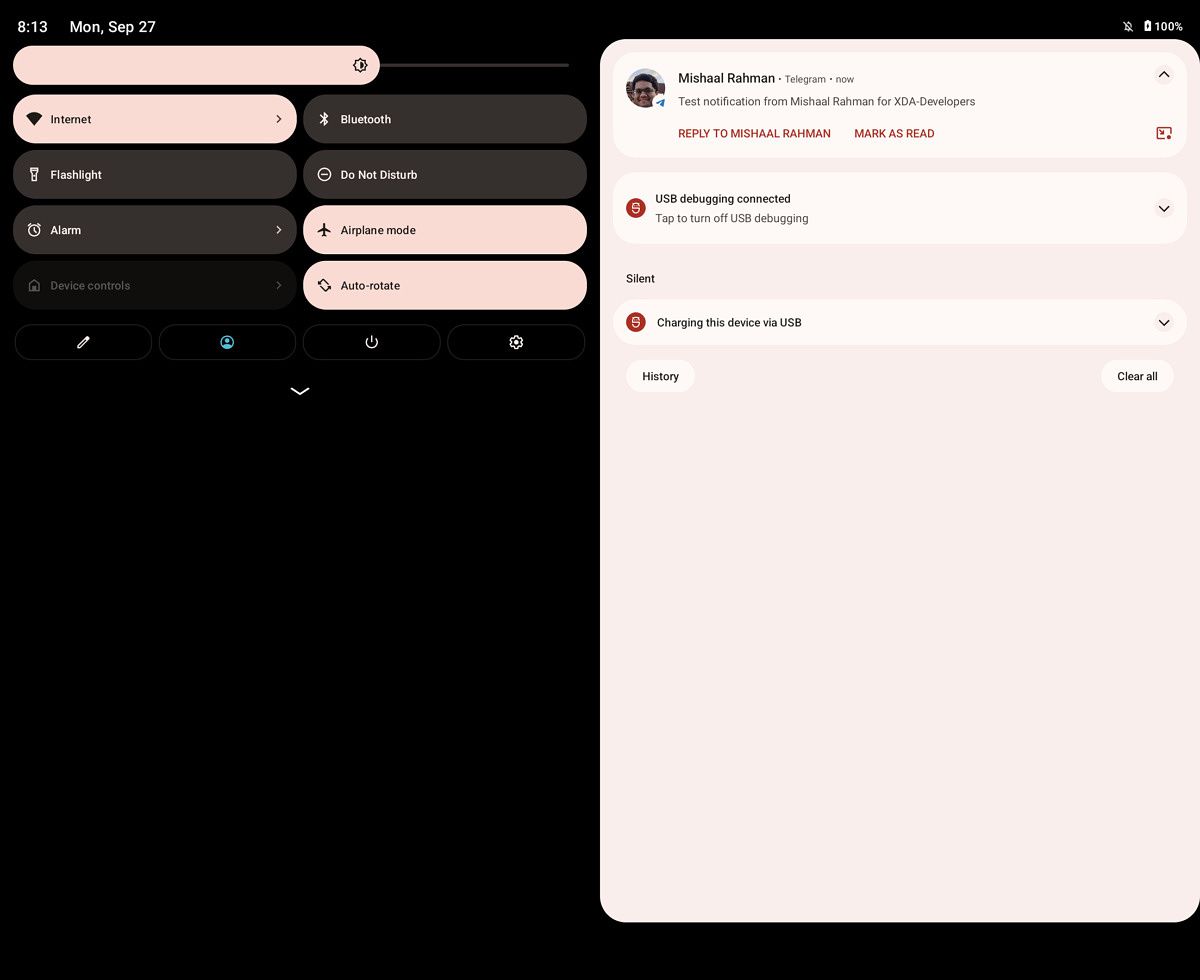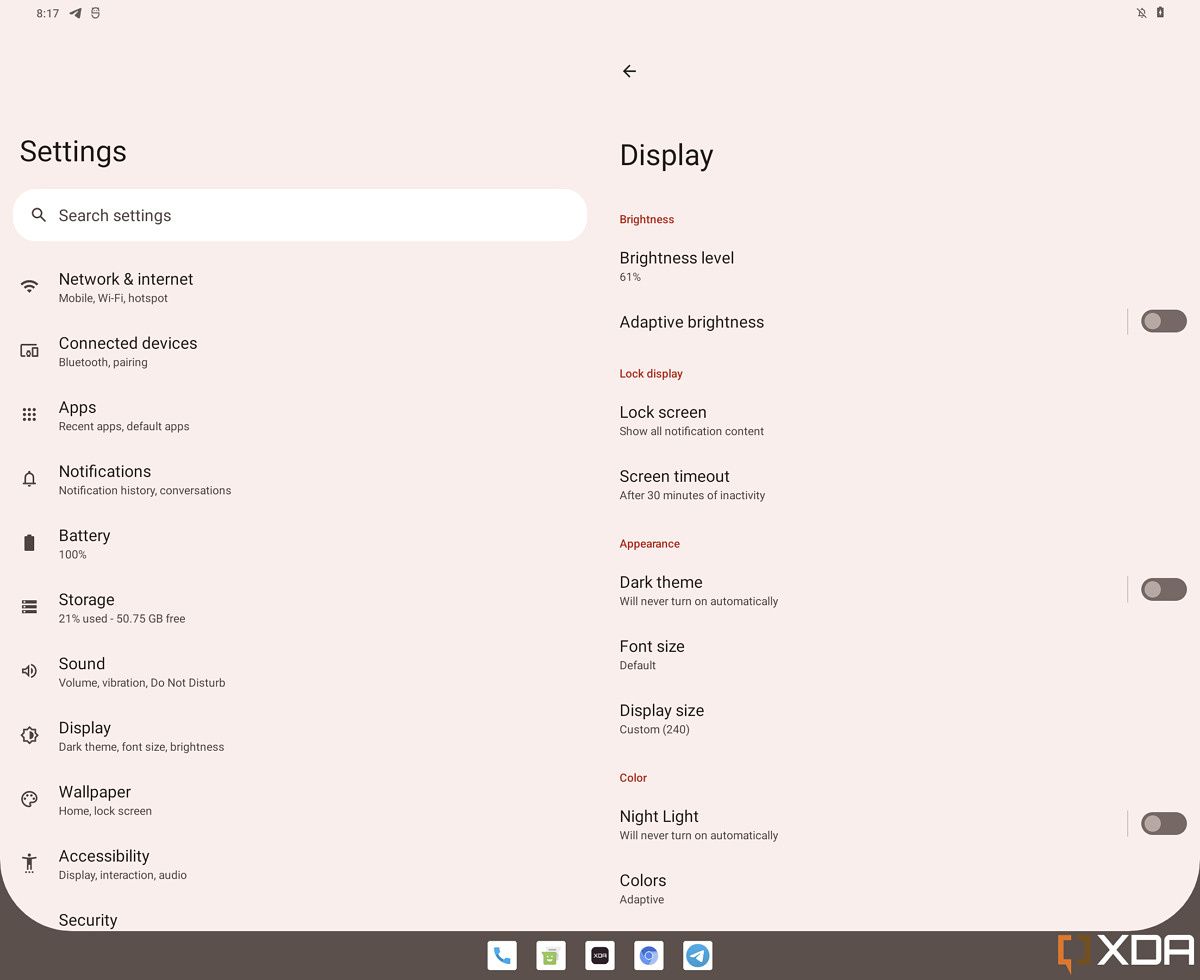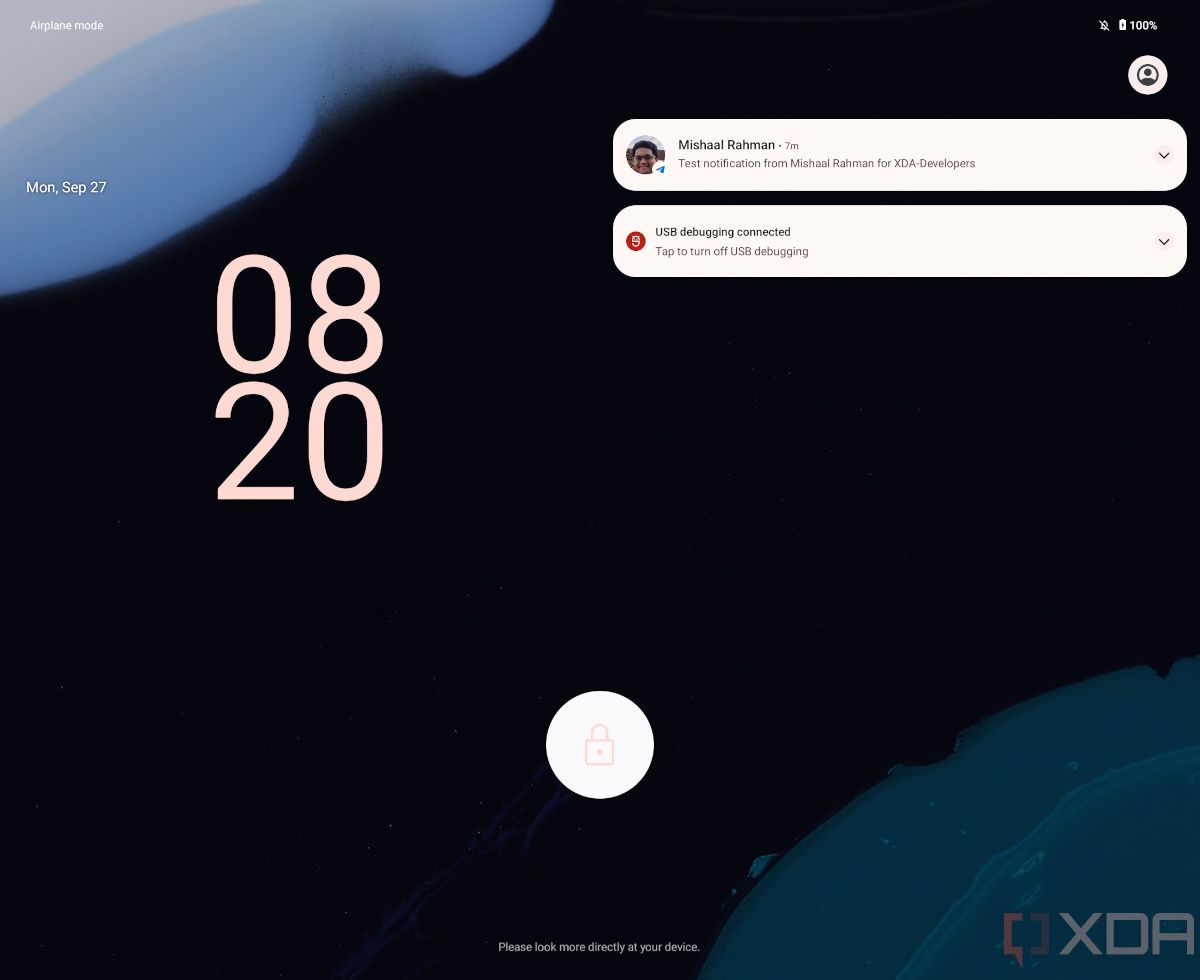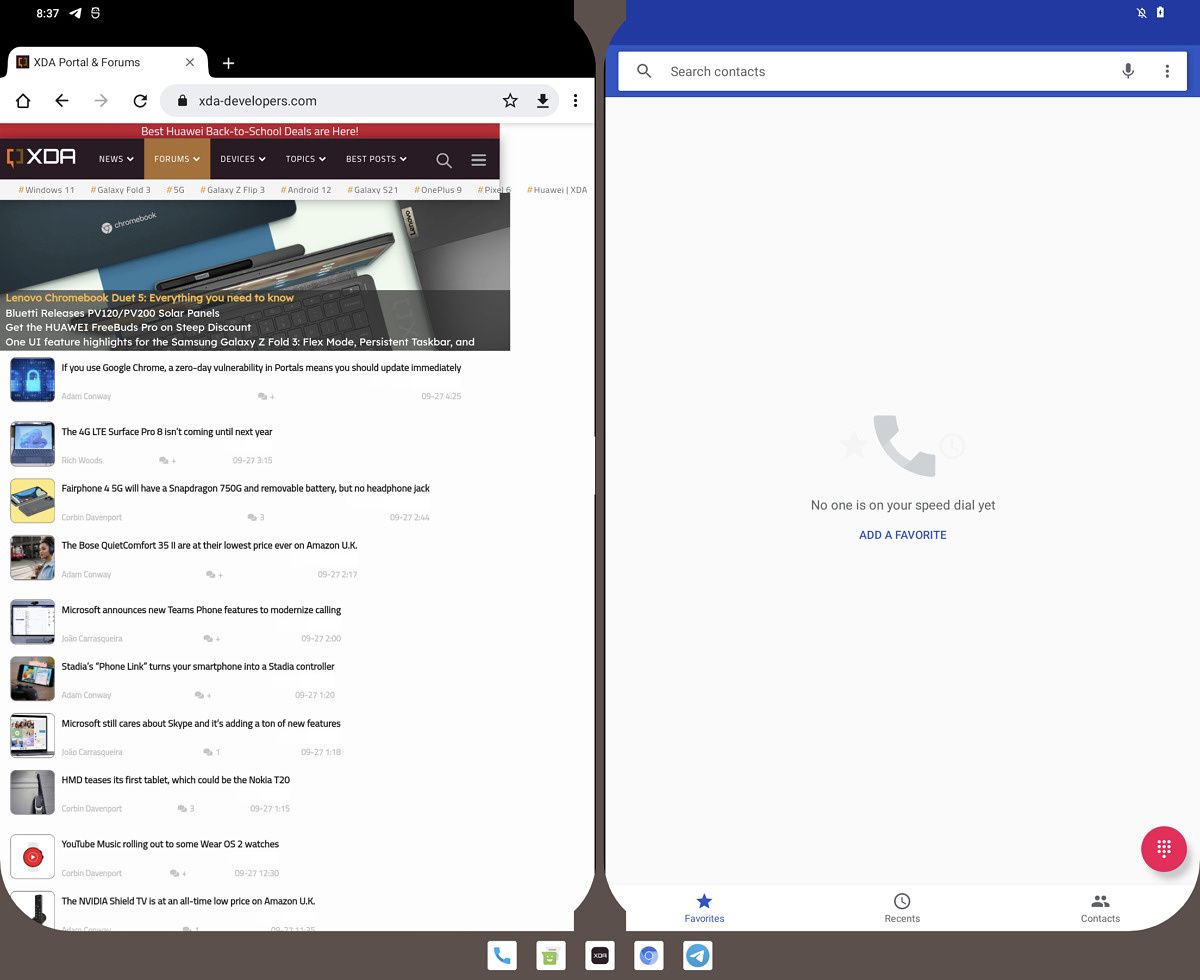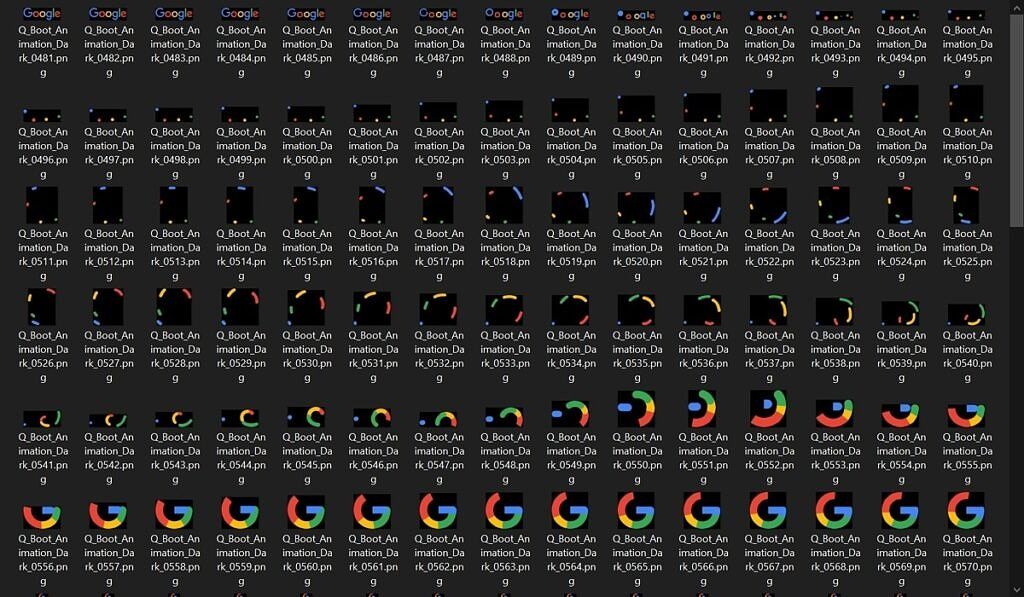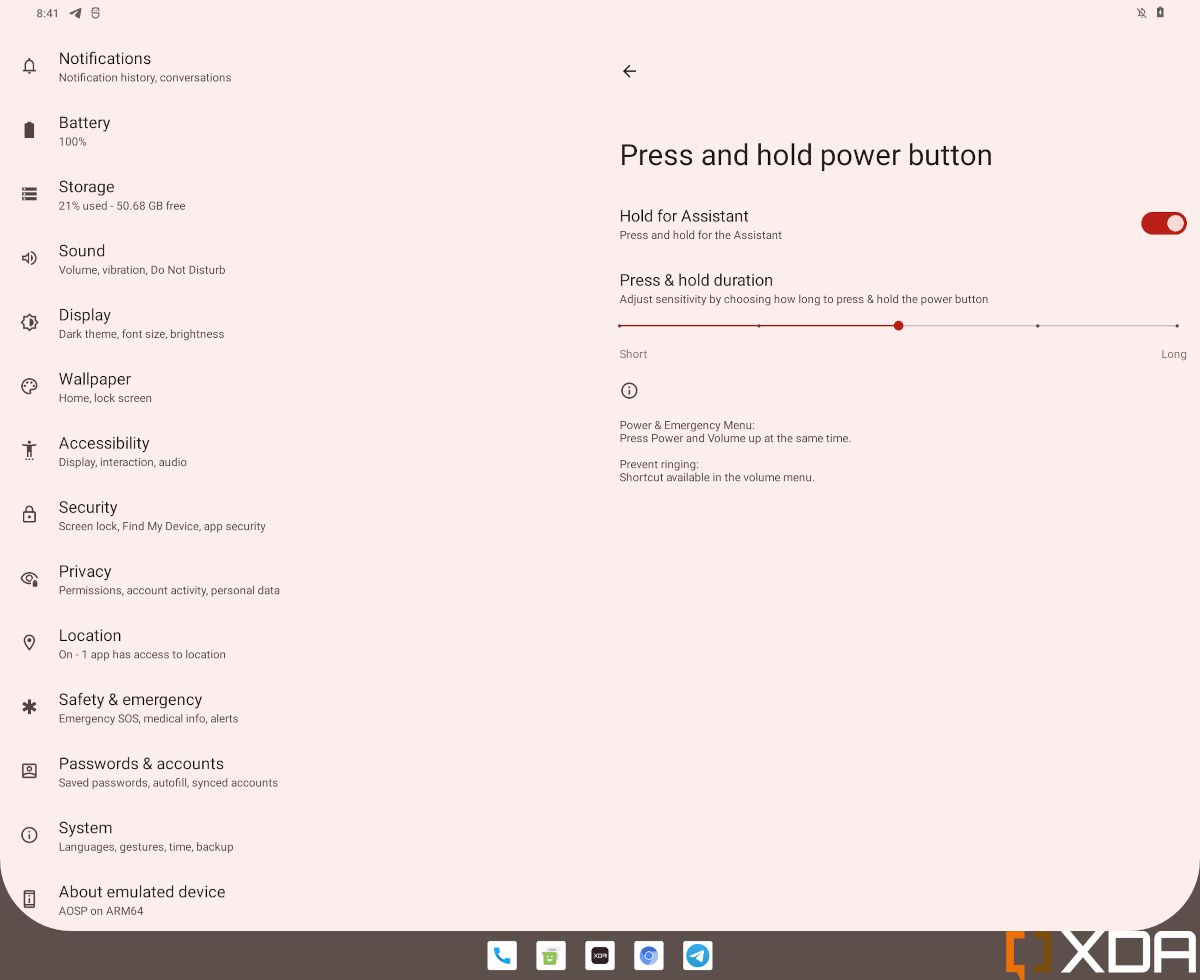Google is expected to release the next major update to Android, Android 12, next week, but ahead of its release, we're already hearing about Google's plans for a follow-up update. Earlier this month, XDA first reported that Google is planning to release an interim update before 2022's Android 13, which we're tentatively calling Android 12.1 in line with Google's naming convention for past point releases. Now, a source has provided XDA with an Android 12.1 build, allowing us to do a hands-on of the update to provide your first look at some of the new features.
Overview of Android 12.1
In case you haven't been following our coverage, you may be wondering how we know an Android 12.1 update is coming. Our first hint came from code changes submitted to the Android Open Source Project (AOSP) Gerrit, which bumped the API level for Android 13 from 32 to 33. For reference, the API level corresponding to Android 12 is 31, so if Android 13 corresponds to API level 33, then that means API level 32 must correspond to some interim release. Comments from Googlers suggest that interim release is code-named "sc-v2", which we believe is short for "Snow Cone v2." Snow Cone, by the way, is the rumored dessert name for Android 12, a convention that Google publicly dropped a few years ago but their engineers still follow internally. Thus, we've taken to calling the upcoming interim release Android 12.1, but it may end up being marketed as something else.
The next thing you may be wondering about is why a point release is even necessary, considering Google hasn't released one since Android 8.1 Oreo in 2017. While we don't have the complete picture yet, we've seen evidence that Google is adding new APIs and features aimed at improving the foldable phone experience. It's possible that Google plans to release its upcoming Pixel Fold device soon with this new OS version and all the new foldable features therein, so they couldn't just wait for next year's Android 13 release as that would push back the phone's release. Since Android 12 already reached platform stability last month, any new APIs that need to be added have to wait until the next release, which would otherwise be Android 13.
We don't know when Google plans to launch the Pixel Fold, nor do we know when Google plans to release Android 12.1. We suspect the two will go hand-in-hand, but we don't know for sure. What we do know is that the update is still in active development, so all of the features we show off below are subject to change. If that happens, we'll provide updates on what we discover.
New features in Android 12.1
- Dual pane notifications panel, Settings, and lockscreen
- Taskbar
- New split-screen and recent apps UI
- Open a notification in a split-screen window
- Open-source dynamic colors, new boot animation
- Press & hold duration for power button
- New wallpaper
Dual pane notifications panel, Settings, and lockscreen
While digging through early builds of Android 12, we learned that Google is adding a dual pane layout in the stock launcher app and notifications panel, as well as a size-adjusted lock screen. At the time, we believed these UI changes were aimed at tablets, but Google made no mention of tablet changes in any of its blog posts or developer documentation. It turns out these UI changes are part of a broader effort to make Android look better on big screen foldable phones. Here's a new look at the upcoming dual pane UI for the notifications panel, as well as a first look at the dual pane Settings app and lockscreen.
When the device's screen is sufficiently large, the Quick Settings and notifications panel can both be shown at the same time on Android 12.1, with the Quick Settings on the left half and the notifications on the right half. In contrast, large screen devices running Android 12 can only show the Quick Settings panel when the status bar is fully expanded. Android 12 doesn't make effective use of the extra screen real estate afforded by foldables, but Android 12.1 will. We've also learned that Android 12.1 will show a 3 column Quick Settings panel when the screen density exceeds a certain value, but we could not get this UI change to appear in the build we have access to.
Similarly, Android 12.1 takes advantage of the bigger screens on many foldables by showing the top-level Settings on the left, and any sub-screens on the right, when the Settings app is open.
The lockscreen, meanwhile, is also split in two, with the clock and date info on the left and notifications on the right. The lock icon is still centered but is now much larger. The icon could use a bit of work, as the icon's color currently clashes with the white background. This UI is likely still a work-in-progress, though.
Lastly, as we previously mentioned, the lockscreen PIN/password entry shifts to the side to make it easier to unlock the device with one hand. The PIN/password appears on the side of the screen that the user touched to dismiss the lockscreen, but it can be moved to the other side by tapping anywhere on the other half of the screen.
Taskbar
Perhaps the most important feature Google is adding in Android 12.1 to improve the foldable phone experience is the taskbar. We saw a glimpse of this feature in an early Android 12 build, but Google has since refined the taskbar feature in its internal code branches. The taskbar is integrated with Android's existing multitasking and split-screen features, and it looks quite similar to what you'll find in many desktop operating systems. You can use the taskbar to quickly switch between apps, drag and drop an app to launch it in split-screen mode, and touch and hold the taskbar to hide it from view. Once enabled, the taskbar and the launcher's app dock become one and the same, with the taskbar seamlessly transitioning into the dock whenever the user exits an app. Up to 5 apps can currently be added to the dock/taskbar, though it's likely this will change in the future.
[video width="1804" height="2208" mp4="https://static1.xdaimages.com/wordpress/wp-content/uploads/2021/09/Android-12.1-taskbar-demo.mp4"]
New split-screen and recent apps UI
The UI for Android's split-screen mode and recent apps have also been slightly tweaked to work better on large screen devices like foldables. For starters, the split screen's divider line is now more prominent, using a dark gray instead of black color and visuals that more clearly inform the user that the divider can be dragged. The larger divider does very slightly cover parts of both apps, but it's not large enough to be distracting or cover up important UI elements. The UI is likely still a work-in-progress, though, so we can expect it to change before the formal release of Android 12.1.
App Pairs, a feature that will let you create a pair of apps to launch in split-screen view simultaneously, has seen some progress since we last saw it in Android 12. We still couldn't add an app pair to the home screen, but we believe the feature will be fully working before Android 12.1 reaches stable status. We were able to get one of its promised features working — namely, the ability to double tap the split screen divider to swap the positions of each app. We were also able to see the two split-screened apps appear as one task in the recent apps overview, but we couldn't find a way to pin the pair.
Speaking of the recent apps overview, Google made a subtle tweak to the layout in Android 12.1. The cards are no longer uniform in size; rather, the most recent one has been enlarged, while the rest have been shrunk and arranged in a 2 row grid. Underneath the most recent card is also a new "split" button that launches split-screen mode; previously, you had to long-press on an app's icon in the recent apps overview to access split-screen mode.
Open a notification in a split-screen window
A new feature called "notification to window" is being considered for Android 12.1, though it hasn't been enabled by default yet. Once enabled, this feature lets you launch an app activity in a split-screen window by long-pressing a notification and then dragging and dropping it to either half of the screen. The code change says you can also drag and drop a heads-up notification, but we weren't able to get it working. We also weren't able to get the feature to open apps in a freeform window, which is also supposed to be working according to the feature's description.
[video width="1804" height="2208" mp4="https://static1.xdaimages.com/wordpress/wp-content/uploads/2021/09/Android-12.1-notification-to-contents.mp4"]
(Opening Telegram like this in a split-screen view alongside Chromium seems kind of buggy, but you hopefully get the picture behind this feature.)
Interestingly, the code change implementing this feature was submitted by a Samsung engineer, so we're wondering if this feature is a one-off contribution from Samsung or part of a broader collaboration between the two companies to improve how Android behaves on foldable devices. Samsung is, after all, the most popular and technologically advanced company when it comes to foldables, so it makes sense they'd want to improve the OS for the form factor they're betting big on.
Open-source dynamic colors, new boot animation
When Android 12 launches next week, only Pixel users will have access to Google's wallpaper-based theming system, code-named "monet." That's because the theming system isn't fully open-source, but that's set to change with the release of Android 12.1. As we first reported last week, Google has added the source code for its "monet" theme system to the AOSP internal branch for Android 12.1. That means that OEMs like Samsung, Xiaomi, OPPO, and OnePlus will have full access to the code behind Google's theming system, allowing them to incorporate it into their own forks of Android 12.1.
Below are some screenshots our source shared with us last week. These screenshots were taken on the same build we were provided access to, and they confirm that "monet" is working on the open-source version of Android.
In addition, we've learned that Google plans to expand dynamic coloring to Android's boot animation in Android 12.1. Dynamic coloring, as a reminder, is what Google calls Material You's wallpaper-based theming system, code-named "monet". Internal documentation viewed by XDA describes how dynamic coloring can be applied to the boot animation. Instead of directly rendering the PNG images within the boot animation file, the new dynamic coloring render mode treats the R, G, B, and A channels of each image as area masks, interpolating between the start and end colors based on the progression of the animation. OEMs can enable the feature by adding a line to the boot animation's description file that specifies the starting color and reading from four system properties that specify the end colors, which are presumably set when the user changes their wallpaper while the OS is booted.
We don't have a working demo of a boot animation with dynamic coloring, so we'll have to wait to see if it looks good in practice. Android's stock boot animation has only seen a handful of subtle changes over the years, with the most notable one being the addition of dark mode support in Android 10. More recently, we discovered that the boot animation can show a progress bar when the system is applying a Google Play System Update that updates the ART Mainline module.
Press & hold duration for power button
One of the most useful additions to Android in recent years — at least in our view — is Device Controls. This feature gives you quick access to your smart home controls without needing to open an app or tap a widget. In Android 11, Device Controls was integrated into the power menu, but in Android 12, the power menu no longer holds Device Controls (or the Quick Access Wallet feature, for that matter.) The reason is that Google wanted to simplify the power menu and make a long-press of the power button trigger the Assistant instead of the power menu.
When the "Hold for Assistant" feature is enabled, holding down the power button for 500ms will launch whatever is set as the default Assistant service. On Android 12, you can't change the duration for how long you need to hold down the power button, but you'll be able to do so in Android 12.1. A new "press & hold duration" slider has been added under "Settings > Gesture > Press and hold power button" that lets you adjust the sensitivity of the long press power button gesture. You can choose from short (250ms) to long (750ms), or somewhere in between (350, 500, or 650ms).
As a sidenote, if you aren't a fan of the changes that Google made to the power menu in Android 12, friend of the Portal Kieron Quinn made an app called "Classic Power Menu" that brings back the old look and feel, complete with integrated Device Controls and Quick Access Wallet. Check that out if you have a phone with root access.
New wallpaper
One minor new addition in Android 12.1 is a new wallpaper. This wallpaper is included in the AOSP codebase, but it may or may not be visible on consumer devices since OEMs are free to ship their own wallpapers. The new wallpaper replaces the "Pink Sky" image included in AOSP releases since Android 7.0 Nougat.
If you're interested in setting this image as the wallpaper on your current device, you can download it from here.
That's everything we've found so far from our brief hands-on of Android 12.1. It may not seem like much, especially considering the breadth of features added in Android 12, but that's exactly why it's only a point release. If you're expecting to see more, you'll have to wait for the Android 13 update in 2022.

